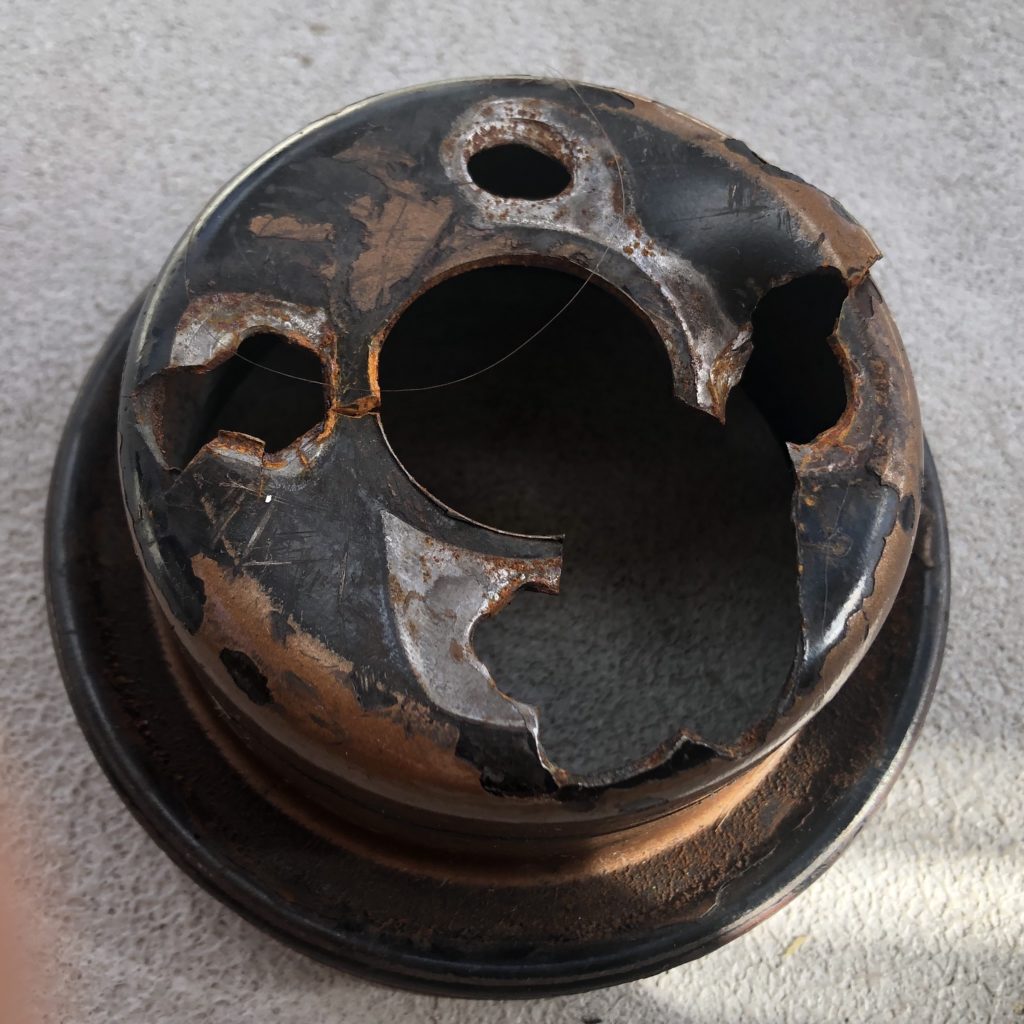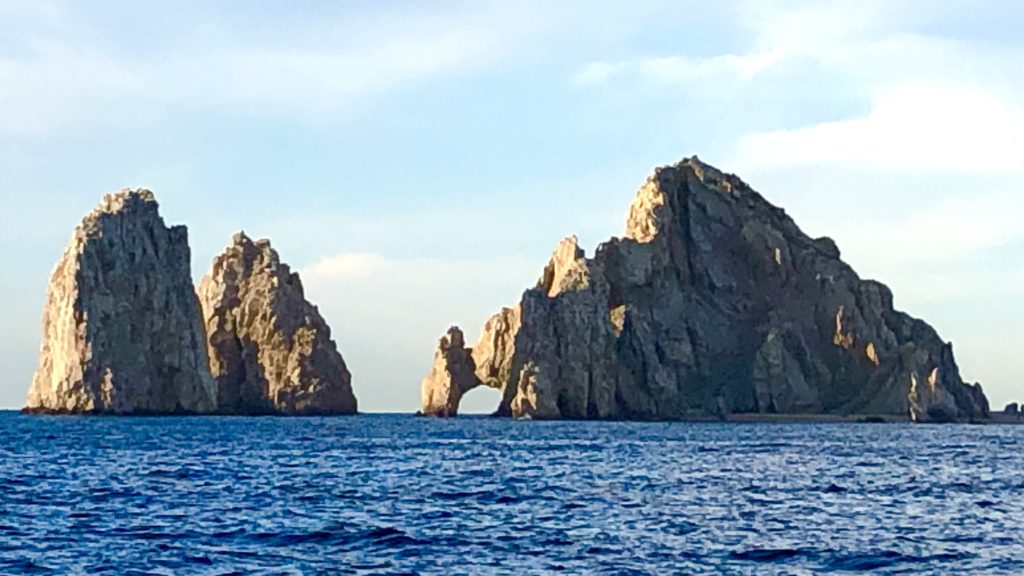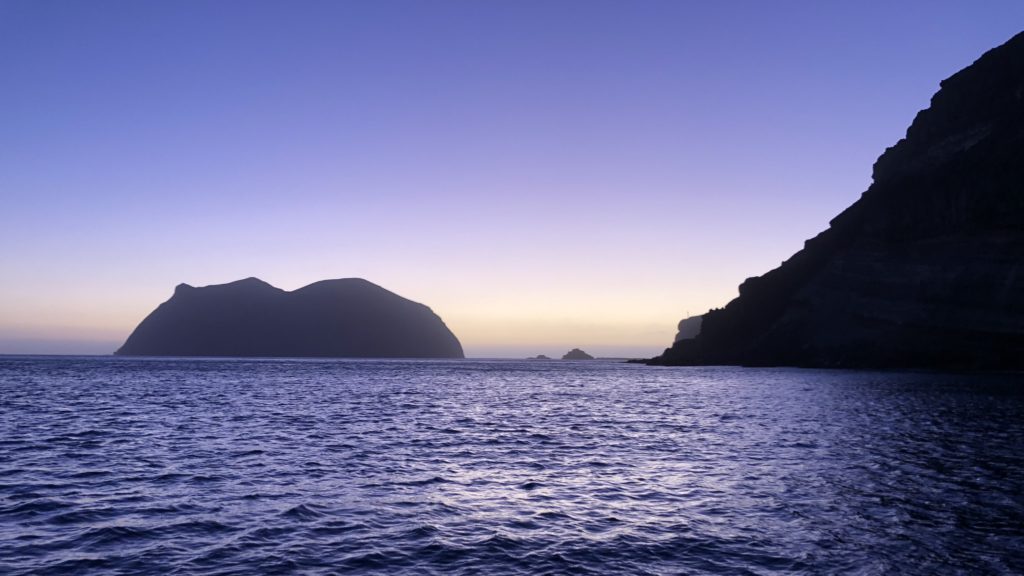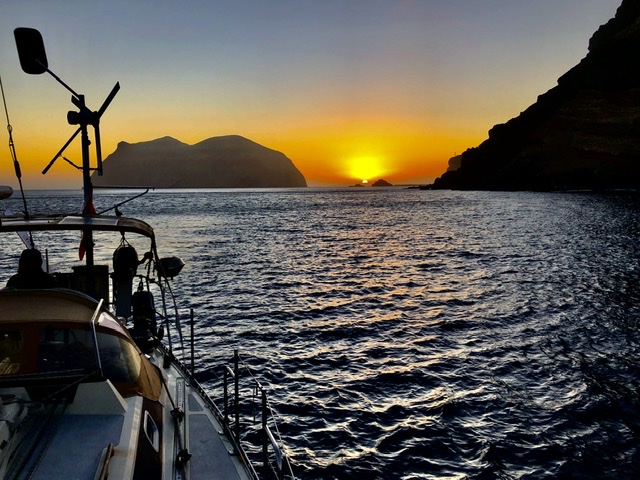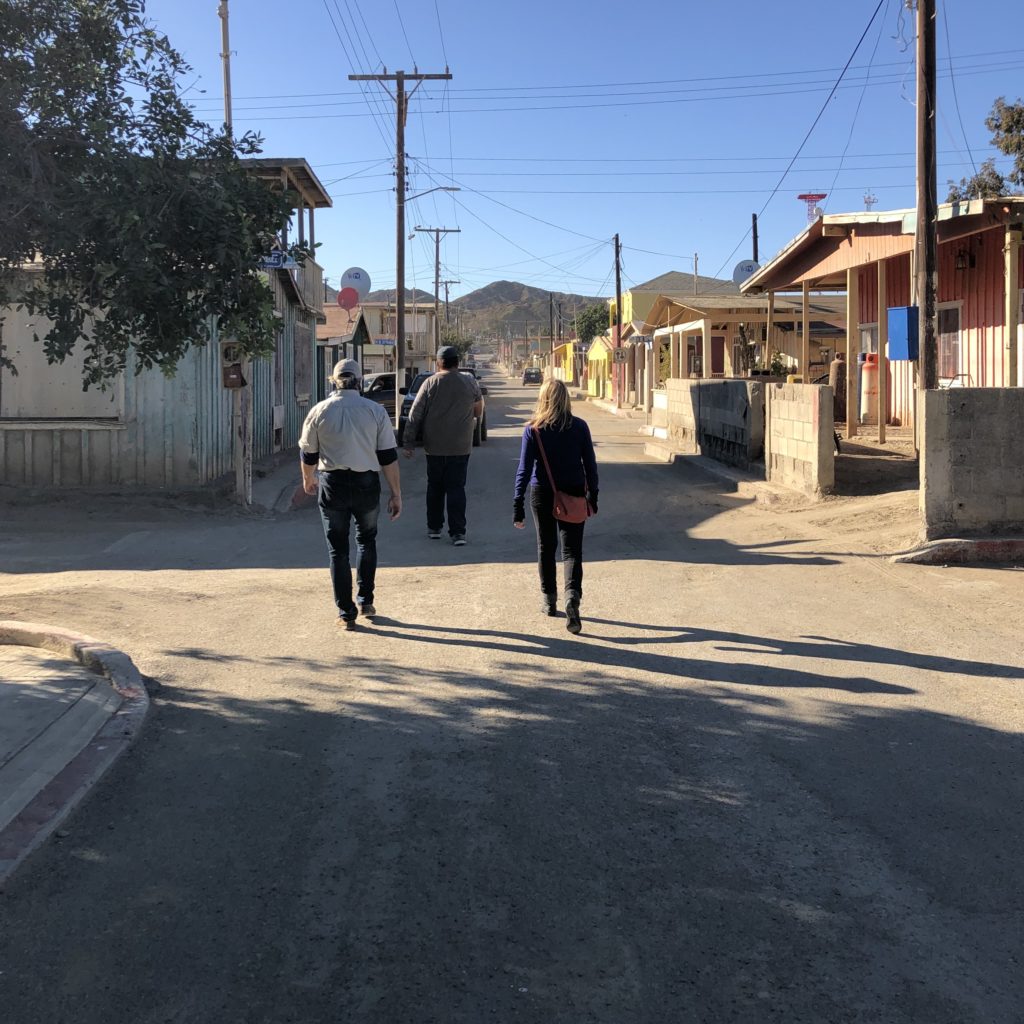February 4, 2020
We’ve been asked what happened to the engine so here is the story about our latest sailing and repair adventure.
We were about 12 hours out of Turtle Bay when the engine overheated and quit in the middle of the night. Barbara was on watch and we all came running into the cabin as it immediately filled with steam and the sound changed from the purring of the engine to the hissing of overheated coolant. When we opened the engine compartment we found antifreeze flung all over, even the boats electrical charger/inverter. We inspected further and discovered that the pulley on the fresh water pump had come loose and broken off the pump. Since the engine could not be used we rejoiced that we could still sail. We had been motor sailing on genoa alone and were able to continue with reasonable NW winds but now with no motor to assist. We waited to daylight to put up the main.
We still had about 200 nautical miles to go so decided that we would just continue to sail to Cabo St Lucas rather than turn back knowing we could get a tow into Cabo when we got there. We checked the forecast and favourable NW winds were predicted.
The other problem we had (are you sure you want all these details?) was that without the engine we had no battery charging and electricity would not be available for the auto pilot. At least we had some alternatives to choose from.
We got the monitor wind vane steering going and used that to steer us without any power and then proceeded to pull our backup Honda generator out of the hatch. After a few tries it fired it up began to charge the batteries or so we assumed.
About an hour into running the generator we noticed that we were getting a “dead battery” indicator from our electrical system monitor. All checks gave us mixed messages from the charging system. The battery monitor claimed the batteries were at 92% and yet simultaneously said we had dead batteries. As we carried on south we discovered that our batteries worked for about 6 hours after the genset ran out of gas and then everything crashed. So we steered by magnetic compass and used our iPads for charts.
Each morning we (Gerry) refilled the genset with gas and on the eco setting it ran about 12 hours.
There are more technical details than that but I don’t want to overwhelm with any more of that. Fortunately we had strong enough winds to sail us from where the breakdown occurred to Cabo in 2 days with 2 more nights at sea. When we arrived at Cabo we drifted into the outer bay and dropped anchor (note without a working windlass to retrieve it}. We were able to flag down a Panga Water Taxi who towed us into the marina where we are now.
The engine parts arrived with Gerrys son two days later so we repaired the engine in Cabo and the next day set off for La Paz with motor working. We will work on the electrical in La Paz where we know of good marine electrical technicians.
